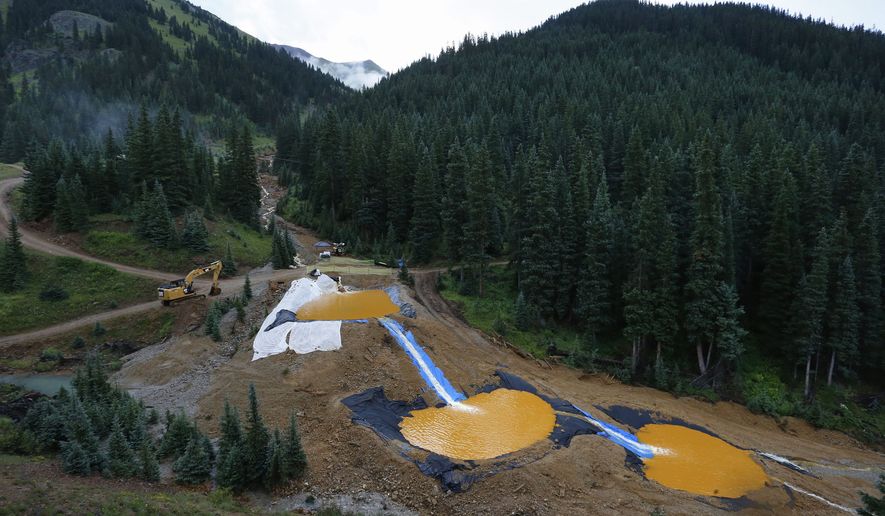DENVER | An EPA internal review released Wednesday concluded that its crew underestimated the water pressure building up behind the debris at the Gold King Mine, but that it would have been “very difficult and expensive” to figure that out.
The review, led by five EPA personnel, said that the mine crew could have gleaned more data from the blockage at the mine by using “a drill hole inserted further back into the [mine entrance] from above the mine tunnel,” which had been done at the nearby Red and Bonita Mine.
Because that drill hole had found no pressurization at the Red and Bonita Mine, however, “it was determined that the tunnel was not full of water and excavation of the [opening] at that mine could proceed.”
“Although difficult and therefore expensive and technically challenging, this procedure may have been able to discover the pressurized conditions that turned out to cause the blowout,” said the 11-page report.
Instead, the crew accidentally uncorked a 3 million-gallon torrent of orange wastewater Aug. 5 that moved from Cement Creek to the Animas River and then San Juan River in New Mexico, contaminating water supplies for communities along the waterway and two Indian tribes.
The report comes as the first federal evaluation of the reasons for the toxic spill, but not the last. The Interior Department is leading a 60-day review of the accident that cut off water supplies to residential and agricultural users for more than a week.
While noting that the crew could have done more to prevent the spill, the review also said that the flood of contamination wasn’t necessarily avoidable.
“If the pressure information was obtained, other steps could have been considered,” the review said. “However, the Team cannot determine whether any such steps would have been effective, or could have been implemented prior to a blowout.”
What’s more, the review gave its on-scene coordinators a pat on the back, crediting their quick reaction for staving off a worse crisis.
“Actions taken by the EPA OSC to pull out the site personnel and crew from and near the [mine opening], just prior to the blowout, probably avoided any fatalities from the pressurized … blowout,” said the review.
The EPA has come under criticism for waiting 24 hours before notifying state and local authorities about the contamination moving down the river.
Earlier this month, kayakers and rafters returned to a stretch of the Animas River in Colorado, and officials said waterways affected by the spill were returning to normal through dilution, the Reuters news agency reported.
But analysts told the wire service that contaminants have settled into river sediments, where they can be churned up and unleash a new wave of pollution when the rivers flood.
• Valerie Richardson can be reached at vrichardson@washingtontimes.com.




Please read our comment policy before commenting.